Abarth 500 595 695 vs Nissan Leaf – Which model is better for everyday use?
Compare performance, boot capacity, efficiency and price at a glance.
Find out which car is the better choice for you – Abarth 500 595 695 or Nissan Leaf?
Costs and Efficiency:
Price and efficiency are often the first things buyers look at. Here it becomes clear which model has the long-term edge – whether at the pump, the plug, or in purchase price.
Nissan Leaf has a minimal advantage in terms of price – it starts at 30800 £, while the Abarth 500 595 695 costs 32600 £. That’s a price difference of around 1791 £.
In terms of energy consumption, the advantage goes to the Nissan Leaf: with 16.70 kWh per 100 km, it’s hardly perceptible more efficient than the Abarth 500 595 695 with 17.10 kWh. That’s a difference of about 0.40 kWh.
As for range, the Nissan Leaf performs evident better – achieving up to 385 km, about 120 km more than the Abarth 500 595 695.
Engine and Performance:
Power, torque and acceleration are the classic benchmarks for car enthusiasts – and here, some clear differences start to show.
When it comes to engine power, the Nissan Leaf has a noticeable edge – offering 217 HP compared to 155 HP. That’s roughly 62 HP more horsepower.
In acceleration from 0 to 100 km/h, the Nissan Leaf is slight quicker – completing the sprint in 6.90 s, while the Abarth 500 595 695 takes 7 s. That’s about 0.10 s faster.
In terms of top speed, the Nissan Leaf performs hardly perceptible better – reaching 157 km/h, while the Abarth 500 595 695 tops out at 155 km/h. The difference is around 2 km/h.
There’s also a difference in torque: Nissan Leaf pulls distinct stronger with 340 Nm compared to 235 Nm. That’s about 105 Nm difference.
Space and Everyday Use:
Whether family car or daily driver – which one offers more room, flexibility and comfort?
Seats: Nissan Leaf offers to a small extent more seating capacity – 5 vs 4.
In curb weight, Abarth 500 595 695 is to a small extent lighter – 1410 kg compared to 1580 kg. The difference is around 170 kg.
In terms of boot space, the Nissan Leaf offers significantly more room – 394 L compared to 185 L. That’s a difference of about 209 L.
In maximum load capacity, the Nissan Leaf performs clearly perceptible better – up to 790 L, which is about 240 L more than the Abarth 500 595 695.
When it comes to payload, Nissan Leaf slight takes the win – 415 kg compared to 385 kg. That’s a difference of about 30 kg.
Who comes out on top?
Overall, the Nissan Leaf shows itself to be is largely superior and secures the title of DriveDuel Champion.
It convinces with the more balanced overall package and proves to be the more versatile choice for everyday use.
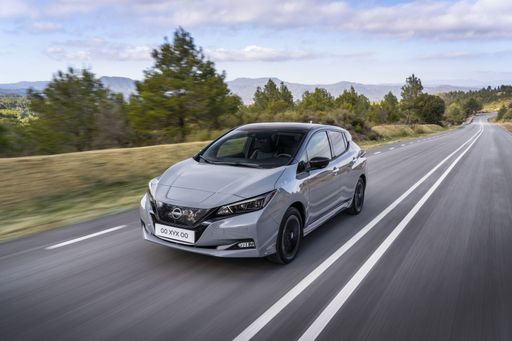 @ Nissan Motor Corporation
@ Nissan Motor Corporation
Nissan Leaf
Abarth 500 595 695
The Abarth 500, particularly in its 595 and 695 renditions, captures the spirit of Italian motoring with its compact yet aggressive design. Known for its lively performance and distinctive styling, this little powerhouse is a joy to drive, offering an engaging experience that appeals to enthusiasts. With its rich motorsport heritage, the Abarth 500 embodies the essence of fun and excitement on both the streets and the race track.
details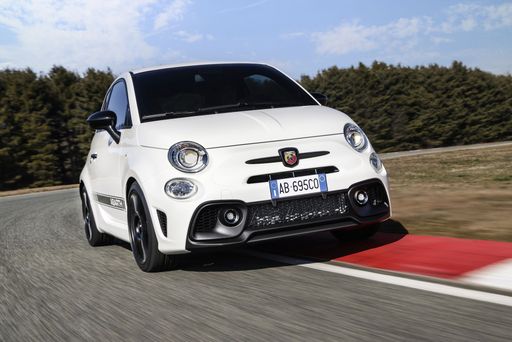 @ Abarth / Stellantis Media
@ Abarth / Stellantis Media
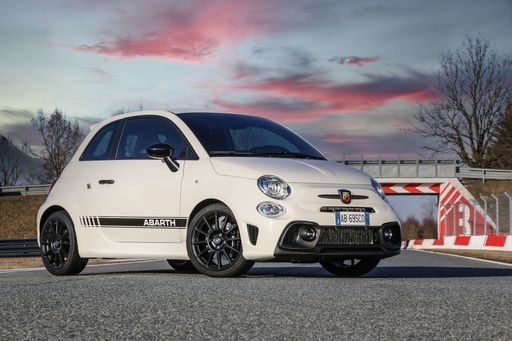 @ Abarth / Stellantis Media
@ Abarth / Stellantis Media
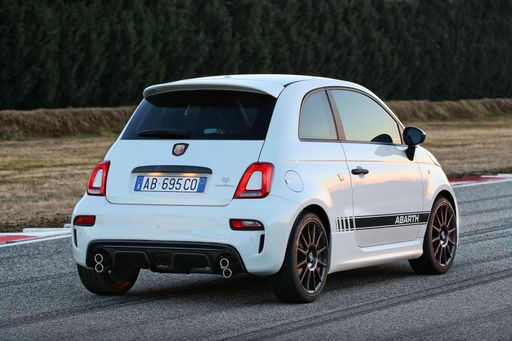 @ Abarth / Stellantis Media
@ Abarth / Stellantis Media
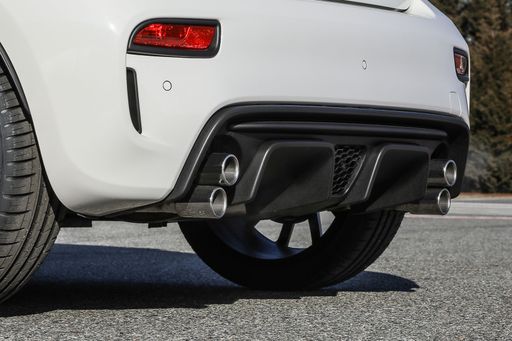 @ Abarth / Stellantis Media
@ Abarth / Stellantis Media
 @ Abarth / Stellantis Media
@ Abarth / Stellantis Media
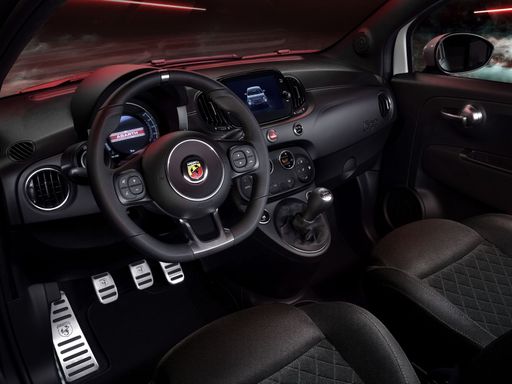 @ Abarth / Stellantis Media
@ Abarth / Stellantis Media
Nissan Leaf
The Nissan Leaf stands out as a pioneering model in the realm of electric vehicles, known for its impressive blend of practicality and eco-friendliness. It offers a smooth and quiet driving experience, making it an ideal choice for city commuting and longer journeys alike. The interior design is both comfortable and intuitive, providing drivers with a sense of modernity and ease of use.
details @ Nissan Motor Corporation
@ Nissan Motor Corporation
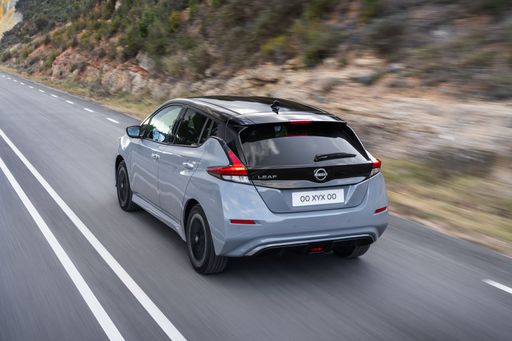 @ Nissan Motor Corporation
@ Nissan Motor Corporation
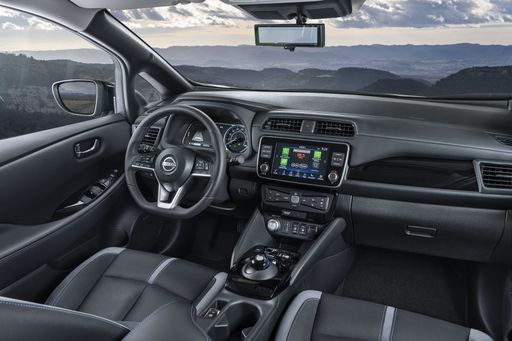 @ Nissan Motor Corporation
@ Nissan Motor Corporation
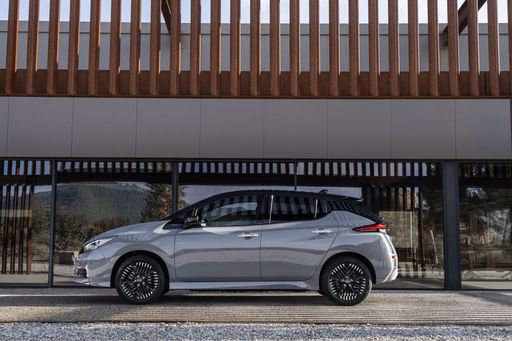 @ Nissan Motor Corporation
@ Nissan Motor Corporation
 @ Abarth / Stellantis Media
@ Abarth / Stellantis Media
|
 @ Nissan Motor Corporation
@ Nissan Motor Corporation
|
|
|
|
Costs and Consumption |
|
|---|---|
|
Price
32600 - 39400 £
|
Price
30800 - 37200 £
|
|
Consumption L/100km
-
|
Consumption L/100km
-
|
|
Consumption kWh/100km
17.1 - 18.8 kWh
|
Consumption kWh/100km
16.7 - 17.8 kWh
|
|
Electric Range
242 - 265 km
|
Electric Range
270 - 385 km
|
|
Battery Capacity
37.80 kWh
|
Battery Capacity
39 - 59 kWh
|
|
co2
0 g/km
|
co2
0 g/km
|
|
Fuel tank capacity
-
|
Fuel tank capacity
-
|
Dimensions and Body |
|
|---|---|
|
Body Type
Hatchback
|
Body Type
Hatchback
|
|
Seats
4
|
Seats
5
|
|
Doors
3
|
Doors
5
|
|
Curb weight
1410 - 1435 kg
|
Curb weight
1580 - 1756 kg
|
|
Trunk capacity
185 L
|
Trunk capacity
385 - 394 L
|
|
Length
3673 mm
|
Length
4490 mm
|
|
Width
1682 mm
|
Width
1788 mm
|
|
Height
1518 mm
|
Height
1540 - 1545 mm
|
|
Max trunk capacity
550 L
|
Max trunk capacity
790 L
|
|
Payload
370 - 385 kg
|
Payload
384 - 415 kg
|
Engine and Performance |
|
|---|---|
|
Engine Type
Electric
|
Engine Type
Electric
|
|
Transmission
Automatic
|
Transmission
Automatic
|
|
Transmission Detail
-
|
Transmission Detail
Reduction Gearbox
|
|
Drive Type
Front-Wheel Drive
|
Drive Type
Front-Wheel Drive
|
|
Power HP
155 HP
|
Power HP
150 - 217 HP
|
|
Acceleration 0-100km/h
7 s
|
Acceleration 0-100km/h
6.9 - 7.9 s
|
|
Max Speed
155 km/h
|
Max Speed
144 - 157 km/h
|
|
Torque
235 Nm
|
Torque
320 - 340 Nm
|
|
Number of Cylinders
-
|
Number of Cylinders
-
|
|
Power kW
114 kW
|
Power kW
110 - 160 kW
|
|
Engine capacity
-
|
Engine capacity
-
|
General |
|
|---|---|
|
Model Year
2023
|
Model Year
2019
|
|
CO2 Efficiency Class
A
|
CO2 Efficiency Class
A
|
|
Brand
Abarth
|
Brand
Nissan
|
Is the Abarth 500 595 695 offered with different drivetrains?
The Abarth 500 595 695 is offered with Front-Wheel Drive.
The prices and data displayed are estimates based on German list prices and may vary by country. This information is not legally binding.
